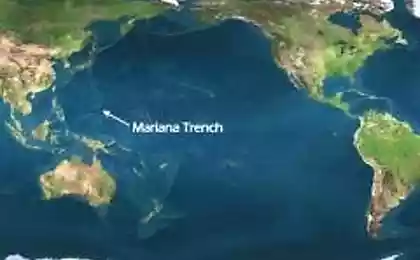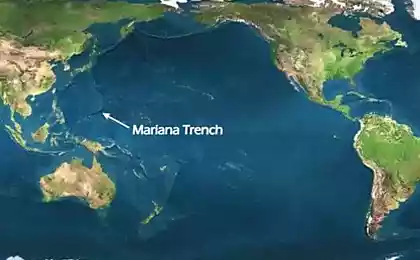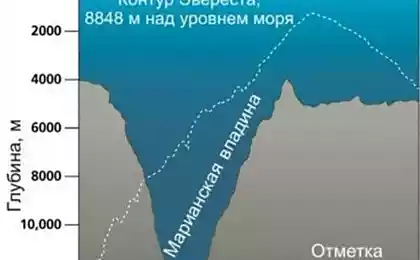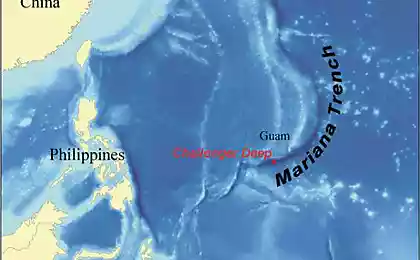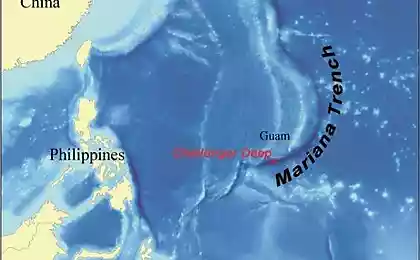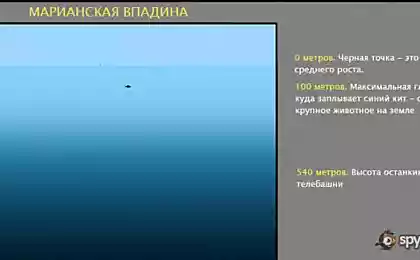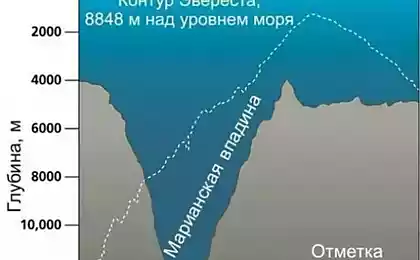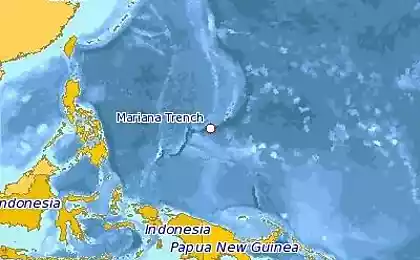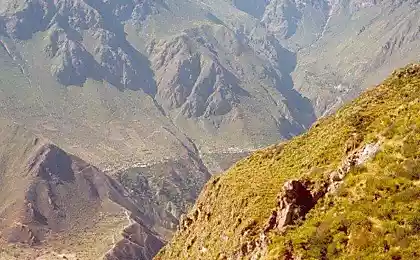1848
Mariana Trench - the deepest place in the world (21 photos)
Mariana Trench, or the Mariana Trench - ocean basins in the western Pacific is the deepest known in the world of geographical objects.
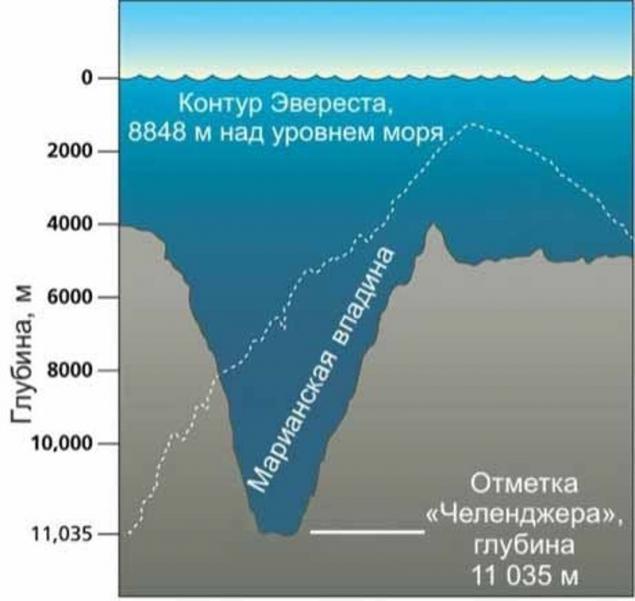
Trough stretches along the Marianas 1500 km; it has a V-shaped profile, cool (7-9 °) slopes, flat bottom width of 1-5 km, which is divided into several rapids closed depressions.
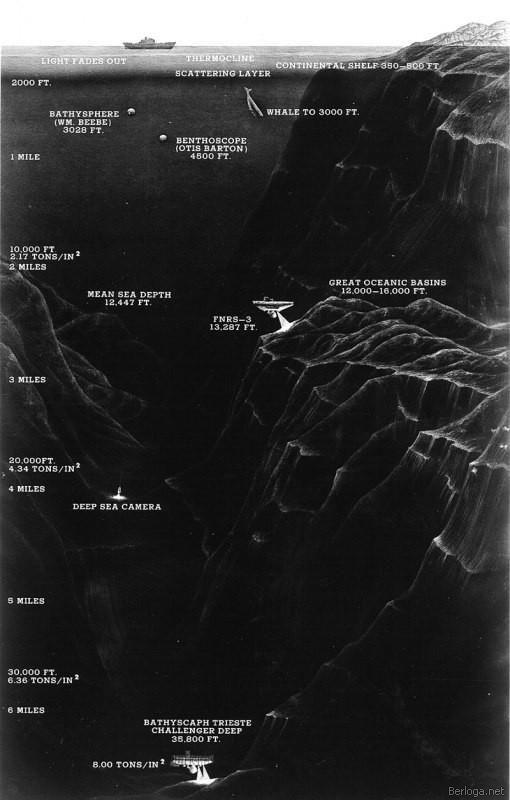
At the bottom of the water pressure reaches 108, 6 MPa, which is more than 1,100 times greater than normal atmospheric pressure at sea level. Depression is on the border of two tectonic plates connections, in the area of movement along faults, where the Pacific plate goes under the Philippine plate.
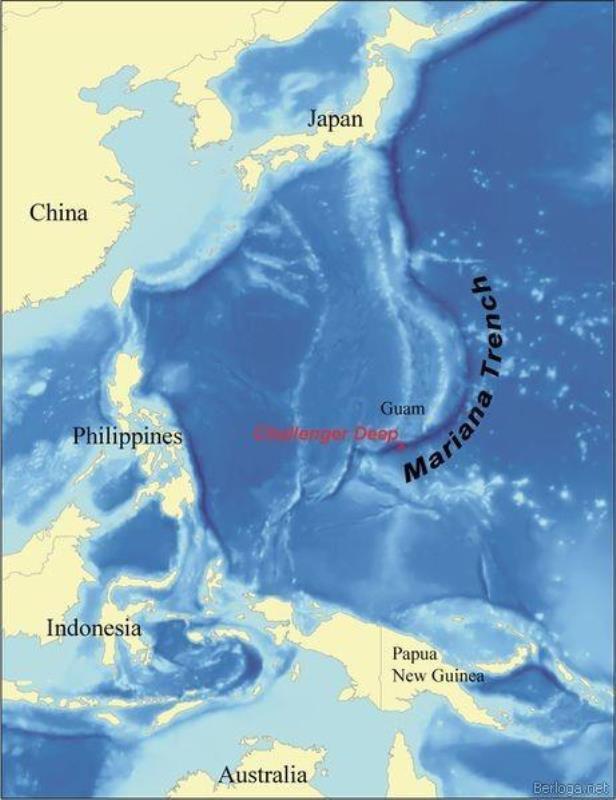
Home study Mariana Trench were supposed British expedition ship "Challenger", conducted the first systematic measurements of the depths of the Pacific Ocean. This military three-masted corvette with sailing equipment has been rebuilt in oceanographic vessel for hydrological, geological, chemical, biological and meteorological work in 1872
Also, a significant contribution to the study of the Mariana Trench was made by Soviet researchers. In 1958, an expedition of the "Vityaz" established the existence of life at depths greater than 7,000 m, thus disproving the perception in the time view of the impossibility of living at depths greater than 6000-7000 m. In 1960, it was held immersion bathyscaphe "Trieste" to the bottom Mariana Trench at a depth of 10,915 meters.
Bathyscaphe "Trieste" to dip, January 23, 1960.
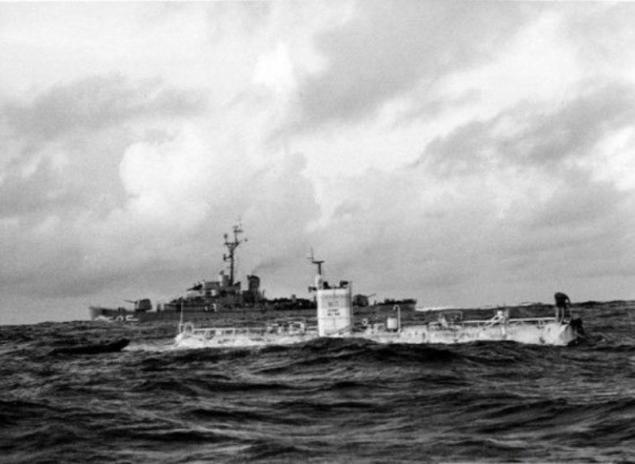
General drawing apparatus showing the main features.
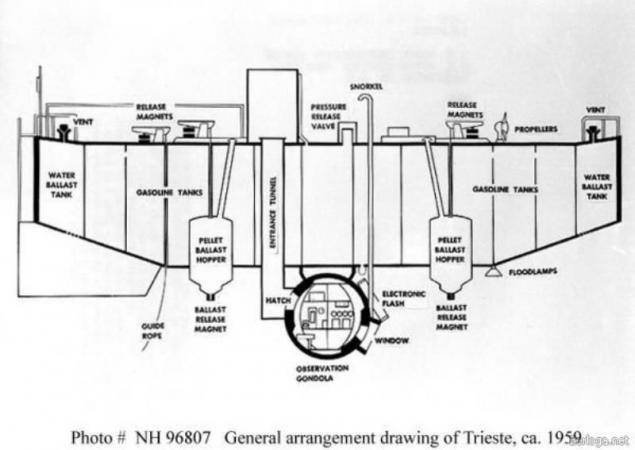
The recording sounds of the instrument began to transfer to the surface of the noise-like teeth gnashing metal saw. At the same time on the monitor TV appeared vague shadows, like a giant fairy dragons. These creatures had several heads and tails. An hour later, the scientists of the American research vessel "Glomar Challenger" have begun to worry that the unique instruments made of beams of heavy-duty titanium cobalt steel in the laboratory of NASA, which has a spherical structure, a so-called "hedgehog" with a diameter of about 9 meters, can remain in the abyss forever. It was decided to raise it immediately. "Hedgehog" was recovered from the depths of more than eight hours. As soon as he appeared on the surface, it immediately put on a special raft. TV cameras and sonar picked up on deck "Glomar Challenger". It was found that a solid steel construction beams were deformed, and the 20-inch steel cable, at which it is lowered, turned out to be half-sawn. Who tried to leave the "hedgehog" on the depth and why - absolute mystery. The details of this interesting experiment conducted by American oceanographers in the Mariana Trench, was published in 1996, the newspaper "New York Times" (USA).
Don Walsh and Jacques Piccard before diving vehicle "Trieste».
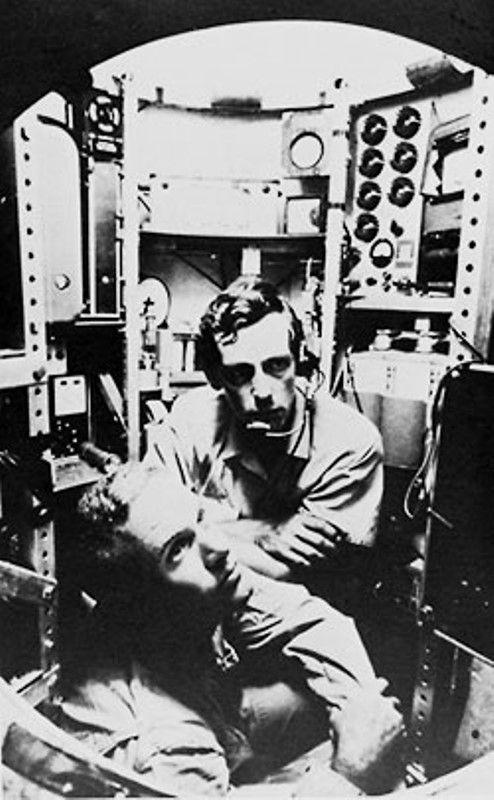
Closeup deep sphere.
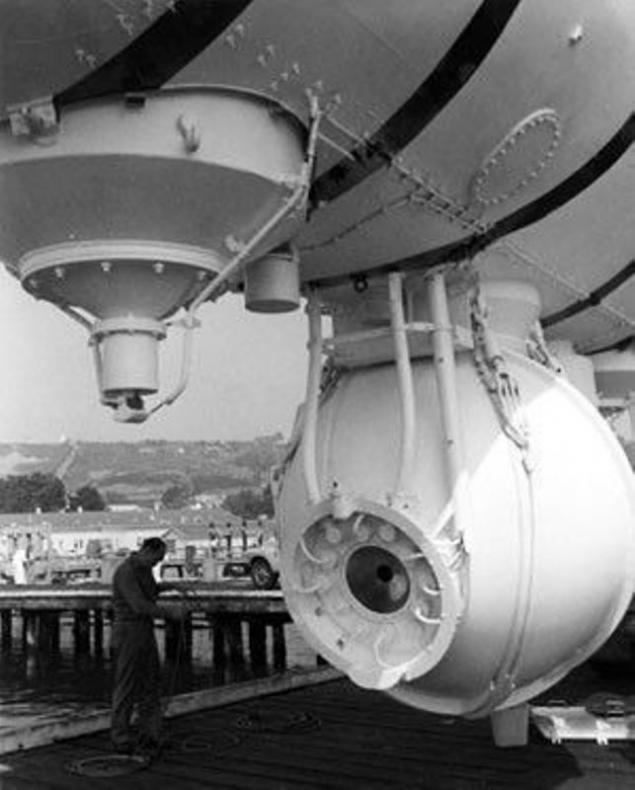
This is not the only case of a collision with unexplained in the depths of the Mariana Trench. Something similar happened with the German research unit "Hayfish" with the crew on board. Caught at a depth of 7 km, the machine suddenly refused to emerge. Find out the reason problems, hydronauts including infrared camera.
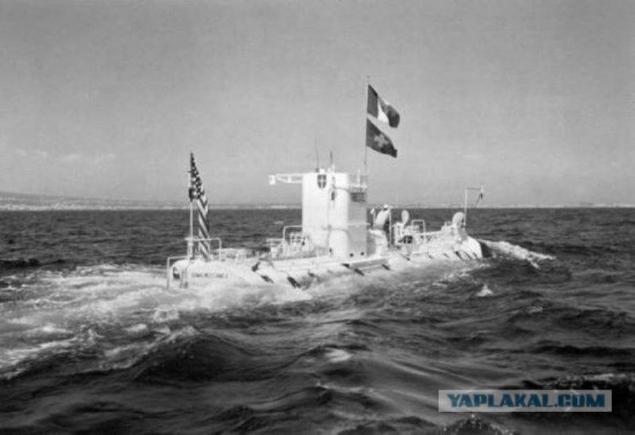
What they saw in the next few seconds, it seemed to them a collective hallucination: a huge prehistoric reptiles, teeth, glaring in the bathyscaphe, he tried to chew it like a nut. Recovering himself, the crew led by a device called the "electric gun". The monster struck by a powerful discharge, disappeared into the abyss.
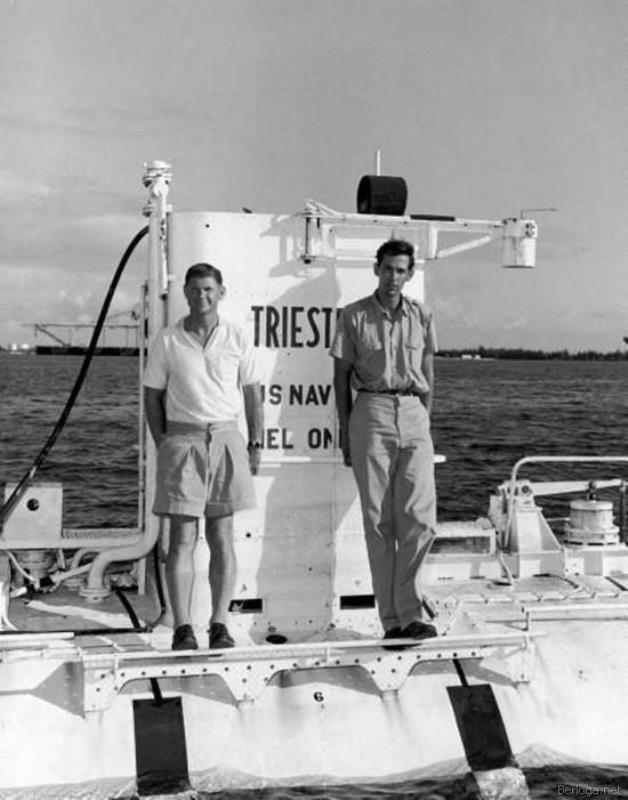
The inexplicable and incomprehensible always attracted people, so scientists around the world are so eager to answer the question: "What is fraught with its deep Mariana Trench?».

They can dwell on such a huge depth of living organisms and how they should look like, given that they crush the huge mass of ocean water pressure exceeds 1100 atmospheres? Difficulties associated with the study and comprehension of the creatures inhabiting these unimaginable depths enough, but human ingenuity knows no bounds. For a long time oceanographers considered madness hypothesis that at depths greater than 6,000 meters in impenetrable darkness under enormous pressure and at temperatures close to zero, there may be life. However, research scientists in the Pacific have shown that in these depths, far below the 6,000-meter mark, there is a huge colony of living organisms pogonophores ((rogonophora; from the Greek. Pogon - beard and phoros - bearing), a type of marine invertebrates inhabiting chitin in long, open at both ends of the tube). Recently the veil of secrecy lifted the manned and unmanned, made of heavy-duty materials, submersibles equipped with video cameras. As a result, it was discovered a rich community of animals, consisting of both famous and less familiar marine groups.
Thus, at depths of 6,000 - 11,000 km found:
barofilnye bacteria (developing only at high pressure), from the simplest - foraminifera (order simplest subclass rhizopods with the cytoplasmic body, dressed sink) and xenophyophore (barofilnye of the simplest bacteria); from multicellular - polychaetes, isopods, amphipods, sea cucumbers, bivalves and gastropods. At depths of no sunlight, no algae, salinity constant temperature of bottom-Kie, the abundance of carbon dioxide, enormous hydrostatic pressure (increases by 1 atmo-sphere for every 10 meters). What fed the inhabitants of the abyss? Food sources of deep animals - bacteria, as well as rain "corpses" and organic detritus coming from the top; deep animals, or blind, or with very developed eyes, often telescopic; Many fish and cephalopods from fotoftorami; in other forms of light surface of the body or its parts.
Therefore, the appearance of these animals just awful and incredible as the conditions in which they live. Among them - the fearsome worms 1.5 meters long, with no mouth and anus, mutant octopus, unusual starfish and some soft-bodied creatures two-meter length, which do not yet identified.
So one could never resist the desire to explore the unknown and rapidly evolving world of technological progress allows you to penetrate deeper into the secret world of the most inhospitable and rebellious world's environment - the oceans.
Subjects for research in the Mariana Trench will suffice for many years, given that the most inaccessible and mysterious point of the planet, unlike Mount Everest (altitude 8,848 m), was conquered only once. Since January 23, 1960, officer in the Navy US Don Walsh and Swiss explorer Jacques Piccard, protected armored, 12-centimeter thick walls, called the bathyscaphe "Trieste", managed to descend to a depth of 10,915 meters. Despite the fact that scientists have made a huge step in the research of the Mariana Trench, the issues have not diminished, and new mysteries that have yet to unravel. And the depth of the ocean is able to keep their secrets. Will people soon discover their?
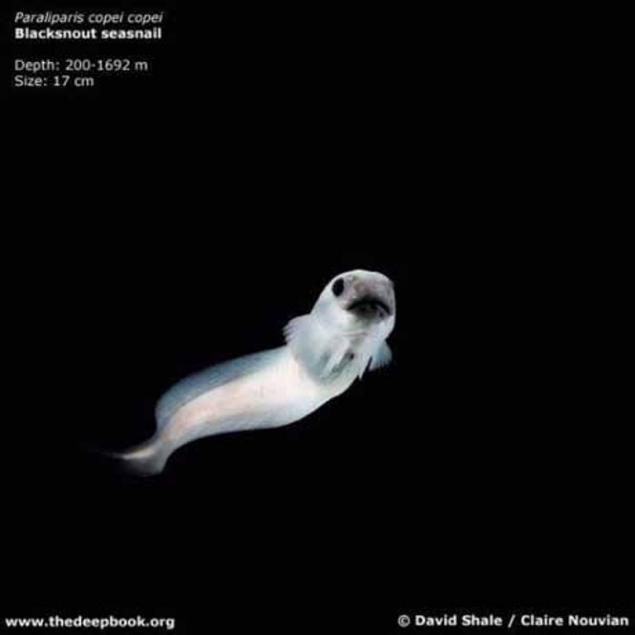
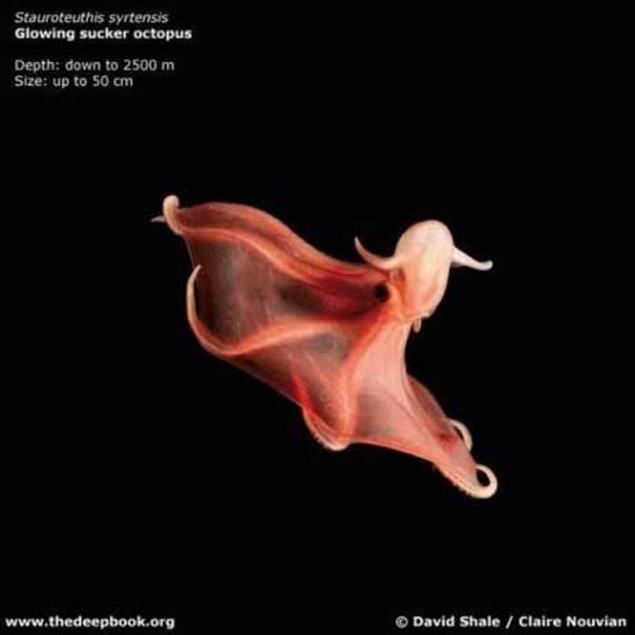
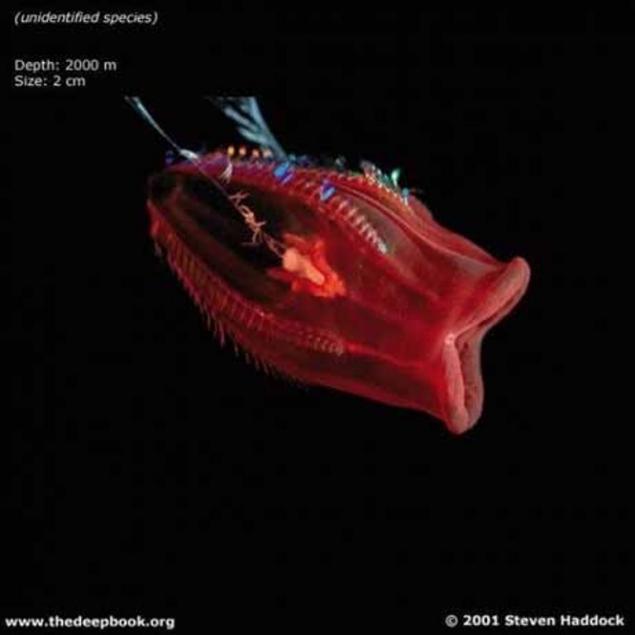
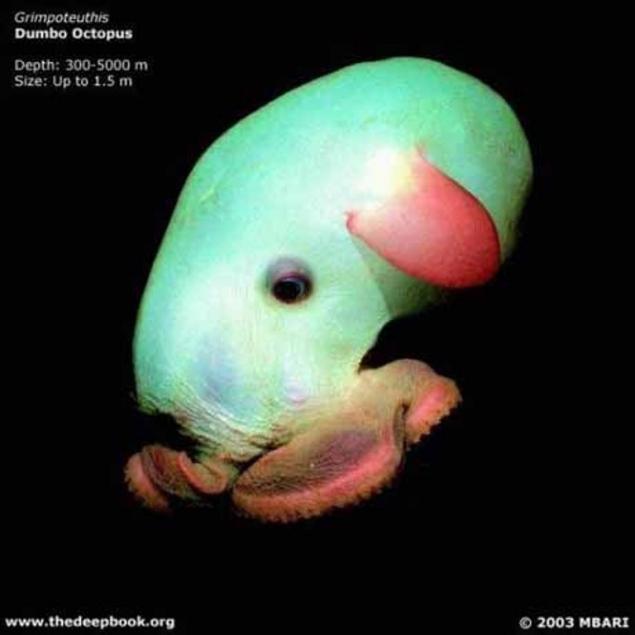

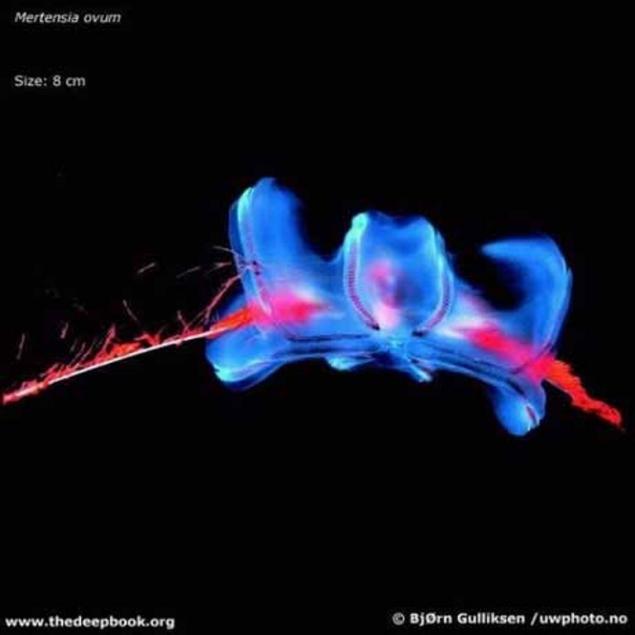
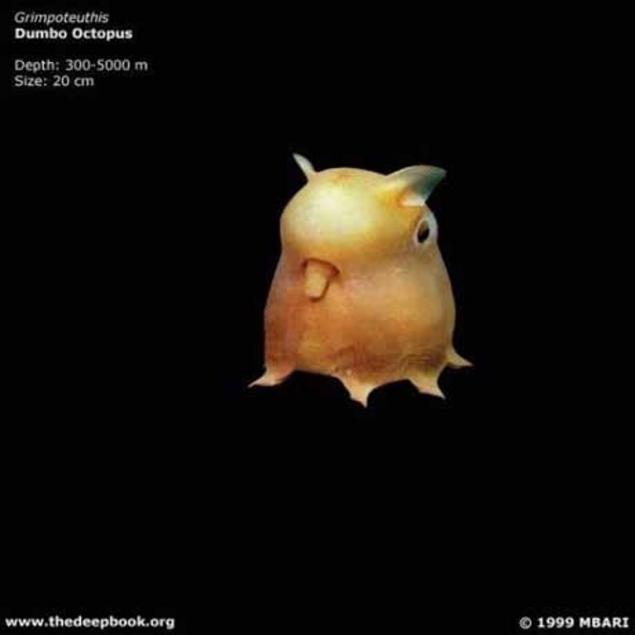
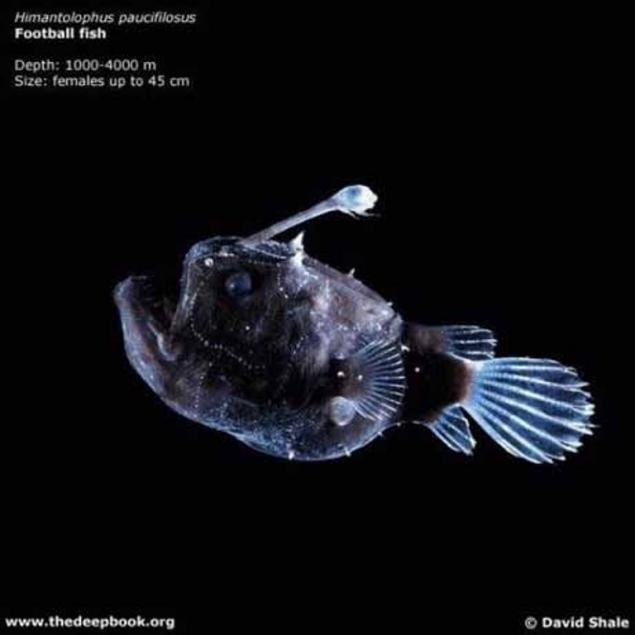
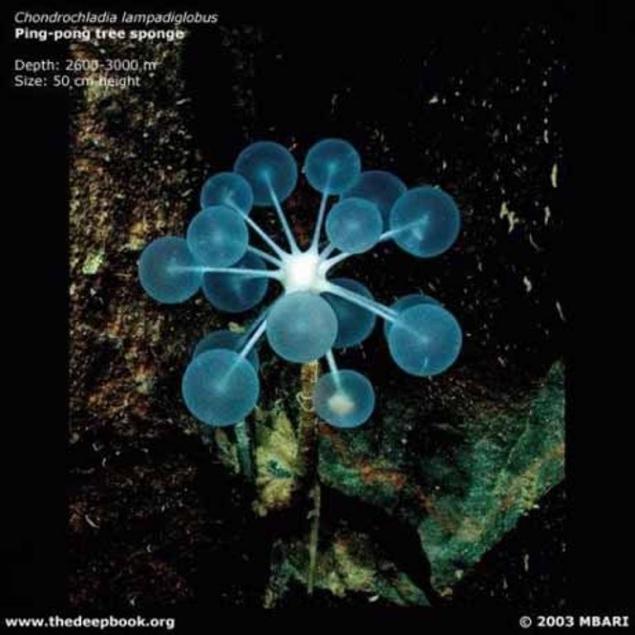
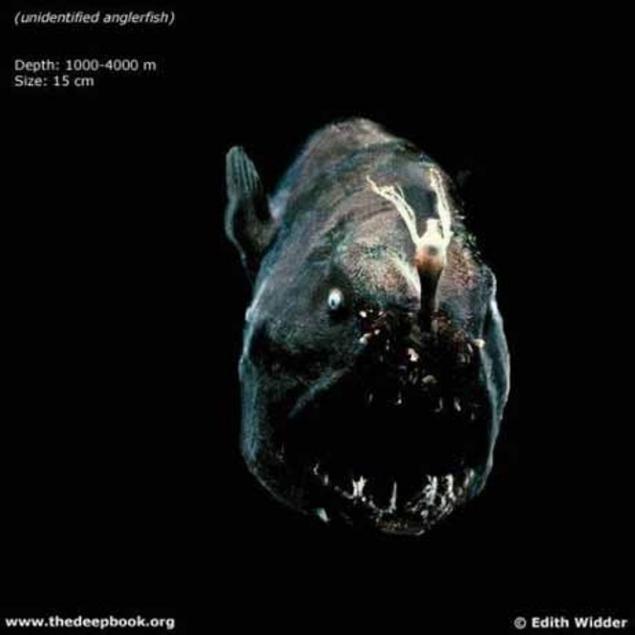
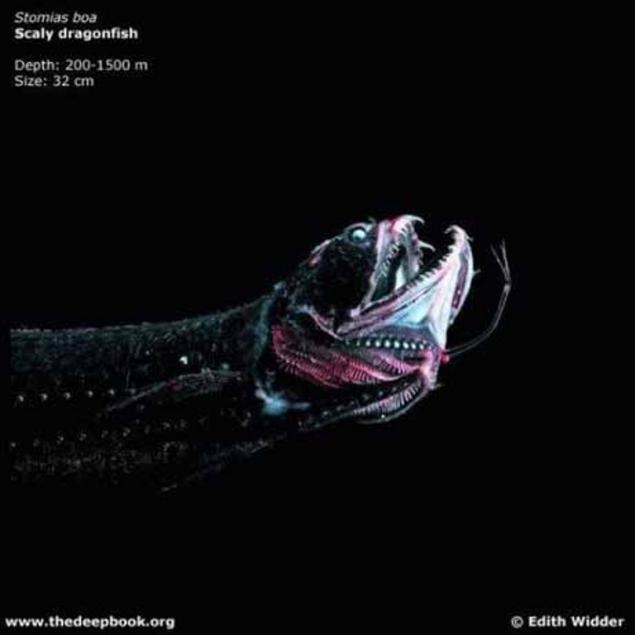

Trough stretches along the Marianas 1500 km; it has a V-shaped profile, cool (7-9 °) slopes, flat bottom width of 1-5 km, which is divided into several rapids closed depressions.

At the bottom of the water pressure reaches 108, 6 MPa, which is more than 1,100 times greater than normal atmospheric pressure at sea level. Depression is on the border of two tectonic plates connections, in the area of movement along faults, where the Pacific plate goes under the Philippine plate.

Home study Mariana Trench were supposed British expedition ship "Challenger", conducted the first systematic measurements of the depths of the Pacific Ocean. This military three-masted corvette with sailing equipment has been rebuilt in oceanographic vessel for hydrological, geological, chemical, biological and meteorological work in 1872
Also, a significant contribution to the study of the Mariana Trench was made by Soviet researchers. In 1958, an expedition of the "Vityaz" established the existence of life at depths greater than 7,000 m, thus disproving the perception in the time view of the impossibility of living at depths greater than 6000-7000 m. In 1960, it was held immersion bathyscaphe "Trieste" to the bottom Mariana Trench at a depth of 10,915 meters.
Bathyscaphe "Trieste" to dip, January 23, 1960.

General drawing apparatus showing the main features.

The recording sounds of the instrument began to transfer to the surface of the noise-like teeth gnashing metal saw. At the same time on the monitor TV appeared vague shadows, like a giant fairy dragons. These creatures had several heads and tails. An hour later, the scientists of the American research vessel "Glomar Challenger" have begun to worry that the unique instruments made of beams of heavy-duty titanium cobalt steel in the laboratory of NASA, which has a spherical structure, a so-called "hedgehog" with a diameter of about 9 meters, can remain in the abyss forever. It was decided to raise it immediately. "Hedgehog" was recovered from the depths of more than eight hours. As soon as he appeared on the surface, it immediately put on a special raft. TV cameras and sonar picked up on deck "Glomar Challenger". It was found that a solid steel construction beams were deformed, and the 20-inch steel cable, at which it is lowered, turned out to be half-sawn. Who tried to leave the "hedgehog" on the depth and why - absolute mystery. The details of this interesting experiment conducted by American oceanographers in the Mariana Trench, was published in 1996, the newspaper "New York Times" (USA).
Don Walsh and Jacques Piccard before diving vehicle "Trieste».

Closeup deep sphere.

This is not the only case of a collision with unexplained in the depths of the Mariana Trench. Something similar happened with the German research unit "Hayfish" with the crew on board. Caught at a depth of 7 km, the machine suddenly refused to emerge. Find out the reason problems, hydronauts including infrared camera.

What they saw in the next few seconds, it seemed to them a collective hallucination: a huge prehistoric reptiles, teeth, glaring in the bathyscaphe, he tried to chew it like a nut. Recovering himself, the crew led by a device called the "electric gun". The monster struck by a powerful discharge, disappeared into the abyss.

The inexplicable and incomprehensible always attracted people, so scientists around the world are so eager to answer the question: "What is fraught with its deep Mariana Trench?».

They can dwell on such a huge depth of living organisms and how they should look like, given that they crush the huge mass of ocean water pressure exceeds 1100 atmospheres? Difficulties associated with the study and comprehension of the creatures inhabiting these unimaginable depths enough, but human ingenuity knows no bounds. For a long time oceanographers considered madness hypothesis that at depths greater than 6,000 meters in impenetrable darkness under enormous pressure and at temperatures close to zero, there may be life. However, research scientists in the Pacific have shown that in these depths, far below the 6,000-meter mark, there is a huge colony of living organisms pogonophores ((rogonophora; from the Greek. Pogon - beard and phoros - bearing), a type of marine invertebrates inhabiting chitin in long, open at both ends of the tube). Recently the veil of secrecy lifted the manned and unmanned, made of heavy-duty materials, submersibles equipped with video cameras. As a result, it was discovered a rich community of animals, consisting of both famous and less familiar marine groups.
Thus, at depths of 6,000 - 11,000 km found:
barofilnye bacteria (developing only at high pressure), from the simplest - foraminifera (order simplest subclass rhizopods with the cytoplasmic body, dressed sink) and xenophyophore (barofilnye of the simplest bacteria); from multicellular - polychaetes, isopods, amphipods, sea cucumbers, bivalves and gastropods. At depths of no sunlight, no algae, salinity constant temperature of bottom-Kie, the abundance of carbon dioxide, enormous hydrostatic pressure (increases by 1 atmo-sphere for every 10 meters). What fed the inhabitants of the abyss? Food sources of deep animals - bacteria, as well as rain "corpses" and organic detritus coming from the top; deep animals, or blind, or with very developed eyes, often telescopic; Many fish and cephalopods from fotoftorami; in other forms of light surface of the body or its parts.
Therefore, the appearance of these animals just awful and incredible as the conditions in which they live. Among them - the fearsome worms 1.5 meters long, with no mouth and anus, mutant octopus, unusual starfish and some soft-bodied creatures two-meter length, which do not yet identified.
So one could never resist the desire to explore the unknown and rapidly evolving world of technological progress allows you to penetrate deeper into the secret world of the most inhospitable and rebellious world's environment - the oceans.
Subjects for research in the Mariana Trench will suffice for many years, given that the most inaccessible and mysterious point of the planet, unlike Mount Everest (altitude 8,848 m), was conquered only once. Since January 23, 1960, officer in the Navy US Don Walsh and Swiss explorer Jacques Piccard, protected armored, 12-centimeter thick walls, called the bathyscaphe "Trieste", managed to descend to a depth of 10,915 meters. Despite the fact that scientists have made a huge step in the research of the Mariana Trench, the issues have not diminished, and new mysteries that have yet to unravel. And the depth of the ocean is able to keep their secrets. Will people soon discover their?











